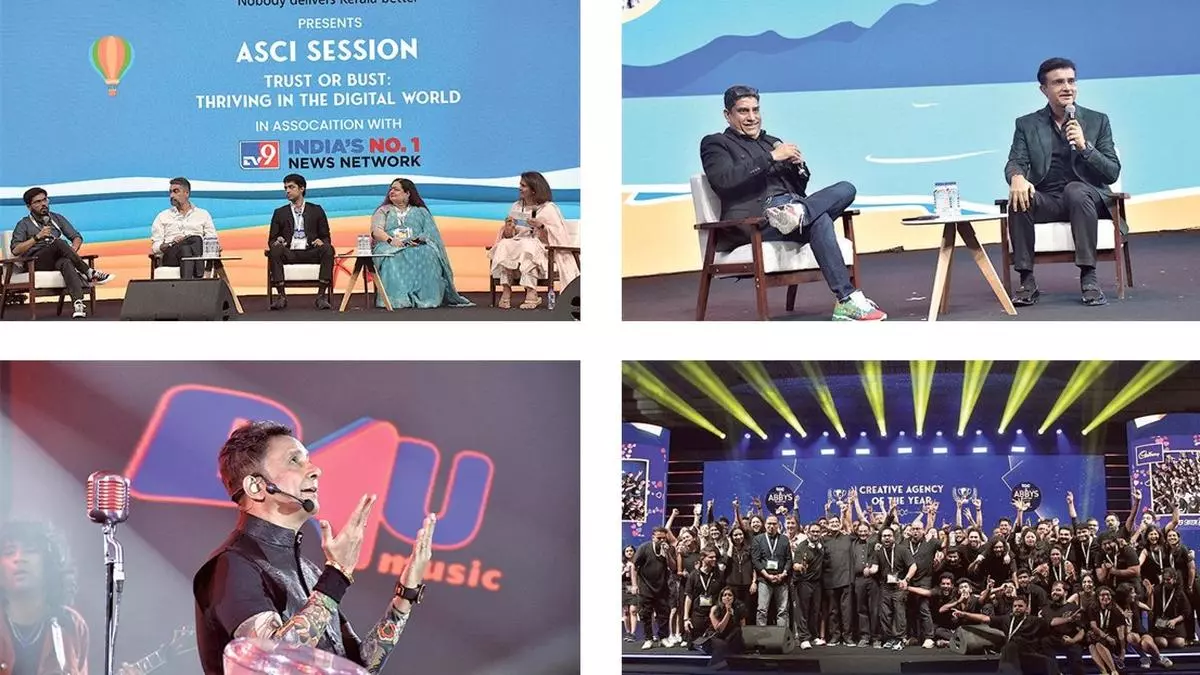Is the ad and media community adapting to disruptive changes fast enough? The onslaught of technology, new consumer behaviours, changing equations with clients who increasingly treat them more like vendors than old partners, the growing influence of influencers, the need for inclusivity — many of these have posed challenges to the industry
- Also read: T is for TV: The tale of the idiot box
Well, Goafest 2024, with the theme of adaptability, did try to address some of these issues. The festival, that for the previous 16 editions had been held in sunny Goa, moved to Mumbai, when it was impossible to hold it in the beach town due to elections. Yes, people laughed at the thought of a festival named Goafest being held elsewhere, but many of the oldtimers felt the spirit of the festival was still captured in Mumbai — with the scenic Powai lake substituting the sand and sea, and mesmerising music from Sufi ki Sultana Harshdeep Kaur and Sukhwinder who got the attendees singing Jai Ho.
Perhaps, because it was hosted in the city of dreams and there was too much Bollywood (Zeenat Aman, Manoj Bajpayee, Vikrant Massey, Neha Dhupia, Medha Shankar et al were in attendance). Perhaps, there could have been more focus on the perils of Outdoors advertising, than just a panel discussion on the hoardings tragedy. Perhaps, cricketer Sourav Ganguly, who delivered a superb session on taking on life’s challenges, could also have been asked to give his take on the Fortune ad episode. And perhaps, the Abby Awards need to be streamlined — running into many categories, it is irritating to see the same campaign getting awarded multiple times.
But these quibbles apart, overall there was lots to takeaway.
How to use trends
This edition saw a lot of focus on learning. To get those creative juices flowing, the festival organisers tied up with London-based D&AD — which gives away the acclaimed Pencil awards — to curate masterclasses. In his session, Paul Drake, COO and Foundation Director, D&AD, told the attendees how to use trends in their advertising. For instance, one of the big trends for 2023, Drake says, was “Joyful Surrealism”. Post-pandemic, people have been bogged down with grim news and reality. “We saw brands trying to move things around and give people some joy. We are seeing it as a way of standing out from the crowd and giving back something to customers,” says Drake.
An example he cites is chips brand Doritos’ work on noise cancelling. The sound of someone crunching on crisps can be annoying. So they created Doritos Silent, a crunch cancellation software.
As an industry, says Drake, very few have been brave enough to step into humour. But joyful activations such as these can really work. He also cited the work of water brand Liquid Death with its punchy lines like “Murder Your Thirst.”
More than pointing out what the trends are, Drake’s session focussed on how to use these trends. Often, brands and advertisers don’t instantly latch on to a trend as they are unsure if it is a crest of a wave or is it going to last. But brands should not be afraid, stresses Drake. Duolingo does this very well in its social media, he says — it sees a fad and it is on it. “We tell brands and advertising folk to be curious and not to be wrapped in a bubble. Keep your eyes and ears open always.”
Drake’s workshop tied in very well with former HUL India chief Sanjiv Mehta’s keynote where-in he highlighted the leadership attribute of “Sensemaking” . Mehta explained this as piecing together disparate information to foresee and navigate new trends and complexity.
De-influencing Trend
An interesting session was on influencers and the trust factor. During the conversation, the panelists — Amit Doshi, Chief Marketing Officer at Britannia; Falguni Vasavada, Professor at MICA and Digital Creator; Paras Sharma, Director of Global Partnerships at Meta and Manisha Kapoor, CEO and Secretary General of ASCI brought up the trend of de-influencers. How are brands looking at de-influencers?
Later, speaking to brandline, Vasavada answered the question of whether de-influencers like Revant Himatsingka (FoodPharmer) can pose a threat to brands. “No brand will solely depend on influencers to make a mark. Authenticity and brand purpose has to shine through all the channels,” she said. However, she felt that de-influencing can be taken positively by brands. There is no harm in learning and unlearning. If a brand is being called out for excessive sugars, it needs to work on it. “Let us involve the people and genuinely work on it,” said Vasavada.

